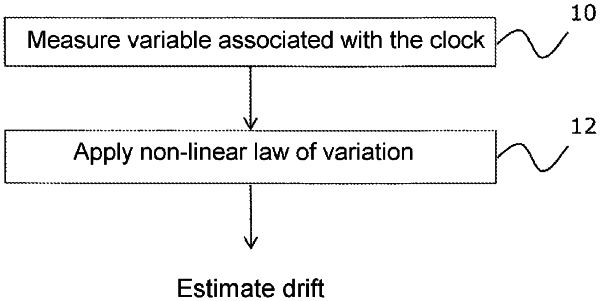| CPC G04G 3/02 (2013.01) [G01V 1/38 (2013.01)] | 15 Claims |

|
1. A method for estimating a drift over time of a variable physical operating parameter of a clock for dating samples of seismic data, associated with a seismic data collection node, said method comprising the steps of:
inserting a clock into a seismic data collection node that assigns a date to a seismic data, relating to at least one seismic event, collected by said seismic data collection node;
at least one variable physical operating parameter associated with said clock is measured in a measurement step, at predetermined instants in time or for predetermined periods of time; and
a predetermined non-linear law of variation of said variable physical operating parameter, which depends on values of said at least one variable physical operating parameter collected in said measurement step, is applied to said variable physical operating parameter so as to obtain an estimate of said drift over time of said variable physical operating parameter,
and wherein, in said measurement step:
before deploying said seismic data collection node for a seismic data collection mission, an initial instantaneous frequency of said clock is measured, and an internal time information signal of said node is synchronized with respect to a reference time information signal;
at a predetermined instant in time during said seismic data collection mission, a final instantaneous frequency of said clock and a phase offset between said internal time information signal of said seismic data collection node and said reference time information signal are measured;
and wherein, in said step of applying said predetermined non-linear law of variation of said variable physical operating parameter, an instantaneous frequency error of said clock is estimated based on said initial instantaneous frequency, said instantaneous frequency at said predetermined instant in time and said phase offset,
and wherein, according to said predetermined non-linear law of variation of said variable physical operating parameter, said instantaneous frequency varies according to a polynomial equation of order greater than or equal to 2, such that a phase of said clock varies according to a polynomial equation of order greater than or equal to 3.
|